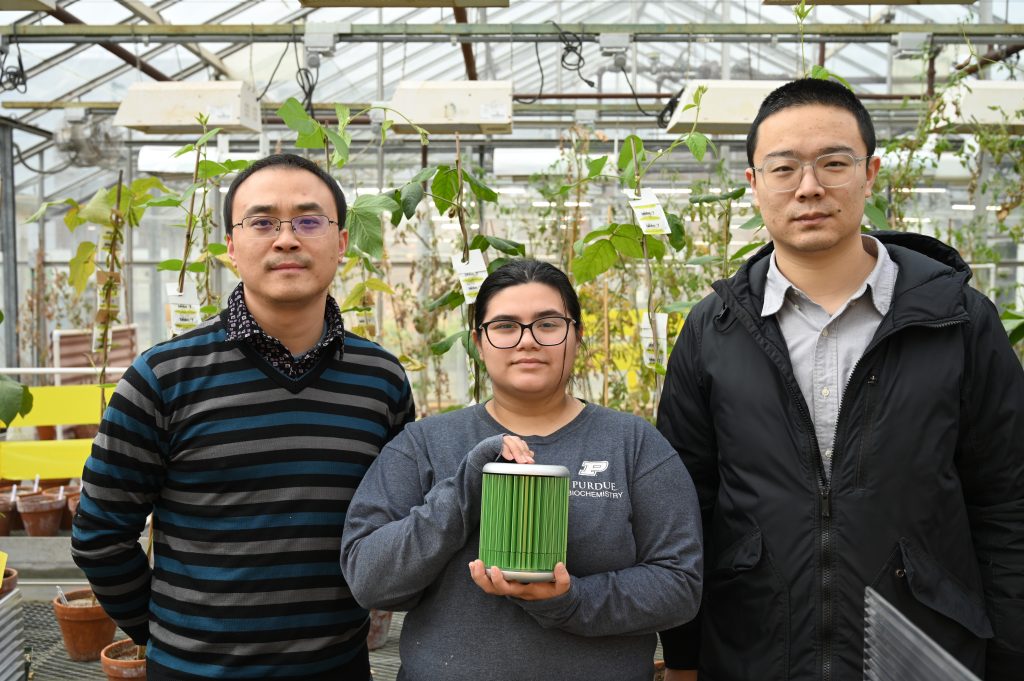Developing another tool to fight soybean cyst nematode in fields
By Carol Brown
Many researchers across the country are working on behalf of farmers to find solutions to the issues created by soybean cyst nematode (SCN). Agronomists are exploring field management practices such as crop rotations and cover crops to reduce the spread of SCN. Geneticists and breeders are developing new soybean varieties with SCN resistance in their genetic makeup. Others are supporting both aspects of research to aid in genetic development and reduce in-field populations.

Lei Zhang, an assistant professor of botany and plant nematology at Purdue University, is leading a research project that could benefit scientists and farmers. The project, supported by the Indiana Soybean Alliance (ISA), focuses on SCN hatch potential through nematode genetics.
“With this project, we are looking at molecular markers that can determine how well SCN eggs will hatch. We want to eventually develop an on-farm tool that can identify SCN population density and hatch potential,” Zhang said. “We have identified candidate SCN genes through RNA-sequencing that may be good indicators for higher or lower egg hatch potential. We have been conducting tests in the lab and in greenhouse conditions for confirmation.”
Some crops, such as dry beans and a few cover crops including clover and hairy vetch, are SCN hosts. Other crops are considered non-host crops for this pest. Non-host crop rotation is a way to control SCN. When the SCN eggs hatch into a non-host crop, there isn’t food available for them, so the nematodes die and their populations decline in the soil. However, if SCN egg numbers are high at the end of the soybean growing season, a rotation with a non-host crop may not effectively reduce SCN populations, says Zhang. SCN eggs can remain dormant and viable in the soil for several seasons and when soybeans are grown in the field again, the SCN eggs sense the presence of soybean roots and hatch to infect the plant. By finding a way to evaluate SCN egg hatch potential, farmers can use this information to make field-level decisions.
“For example, if farmers have an idea that the potential of SCN hatch is high, then planting a non-host crop will be crucial and effective to help reduce SCN population density. With this information, farmers can be cognizant of planting a non-host crop, such as corn, and not another host crop within their rotation,” he explained. “Of course, environmental conditions, such as soil moisture and temperature, can affect hatch potential, as it can be variable among different years and different fields.”
Currently, finding SCN hatch potential through a hatch assay in a lab takes up to three weeks and is labor-intensive, and therefore costly. Locating molecular markers within the nematode genes can help to speed up this lengthy process, determining the potential in a day or less. This could be good news for fellow researchers as well as farmers.
“We want to develop a tool that is portable, that can be used in the field,” Zhang said. “A retail agronomist or extension specialist could conduct the test through soil sampling and have diagnostics completed within a day or sooner.”
The portable machine Zhang is working on uses polymerase chain reaction, or PCR, technology to test soil samples in the field for SCN population density and hatch potential. This technology may sound familiar, as it is used when testing for the COVID-19 virus in humans.

But first, Zhang needs to ensure the SCN hatch potential genetic markers and genes associated with SCN hatch are accurate. The team ran the newly developed diagnostic analysis on SCN samples in the lab, then on SCN propagated in their greenhouse.
They compared results with traditional methods of evaluating SCN hatch potential with positive outcomes. This coming crop season, Zhang will expand the testing of both the genetic markers and the portable machine in research plots under real growing conditions.
Zhang said the on-farm diagnostic test can be done similarly to traditional SCN testing. Before planting or after harvest are appropriate times to take soil samples for both detection of SCN in the field and for his SCN hatch potential test. Making this technology available to find out hatch potential quicker and for less cost can provide answers for farmers and crop consultants to help make field-level management decisions.
“By doing this diagnosis, it can provide an estimate of the abundance and hatch potential of soybean cyst nematode in the field,” Zhang said. “Growers can compare this with their threshold numbers to help decide what should be grown in rotation in each of their fields.”
Posted: March 23, 2024
Category: Indiana Corn and Soybean Post - March 2024, ISA, News




